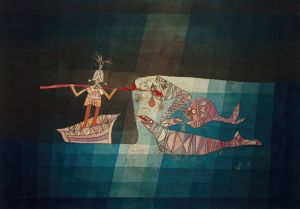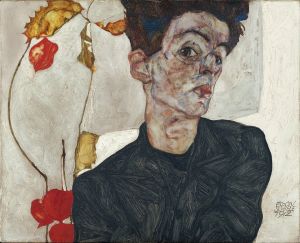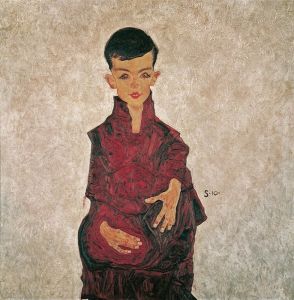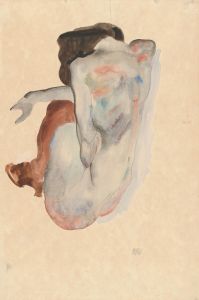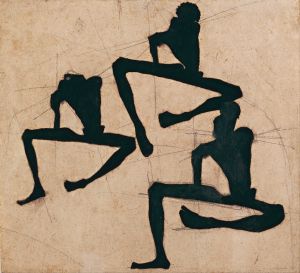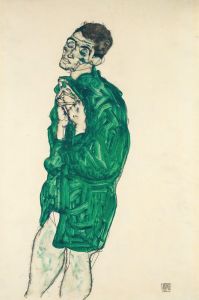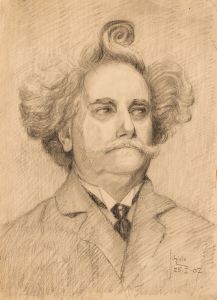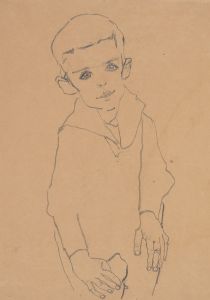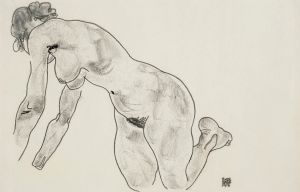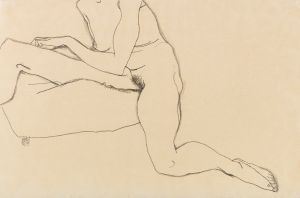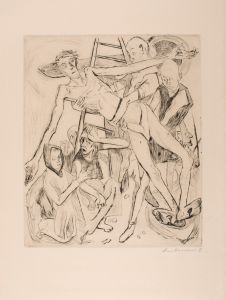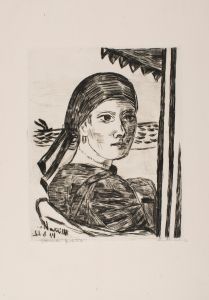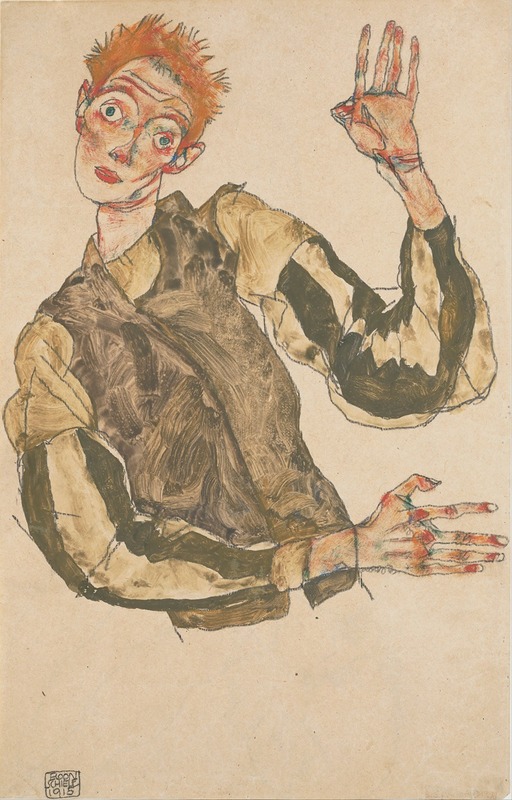
Self-Portrait with Striped Sleeves
A hand-painted replica of Egon Schiele’s masterpiece Self-Portrait with Striped Sleeves, meticulously crafted by professional artists to capture the true essence of the original. Each piece is created with museum-quality canvas and rare mineral pigments, carefully painted by experienced artists with delicate brushstrokes and rich, layered colors to perfectly recreate the texture of the original artwork. Unlike machine-printed reproductions, this hand-painted version brings the painting to life, infused with the artist’s emotions and skill in every stroke. Whether for personal collection or home decoration, it instantly elevates the artistic atmosphere of any space.
"Self-Portrait with Striped Sleeves" is a notable work by the Austrian Expressionist painter Egon Schiele, created in 1910. Schiele, born in 1890 in Tulln, Austria, was a prominent figure in early 20th-century art, known for his intense and often provocative depictions of the human form. His work is characterized by its raw emotional power and innovative use of line and color, which helped to define the Expressionist movement.
This self-portrait is one of many that Schiele produced throughout his career, as he frequently used his own image to explore themes of identity, existential angst, and the human condition. In "Self-Portrait with Striped Sleeves," Schiele presents himself in a striking and somewhat confrontational pose. The painting captures the artist's gaunt features and intense gaze, elements that are typical of his self-portraits. Schiele's use of bold lines and stark contrasts in color emphasizes the psychological depth and emotional intensity of the image.
The striped sleeves in the painting are a distinctive feature, drawing attention to Schiele's arms and hands, which are often focal points in his work. The stripes may also serve to accentuate the angularity and tension in his pose, contributing to the overall sense of unease and introspection that pervades the piece. Schiele's exploration of the human form often included exaggerated and distorted figures, reflecting his interest in expressing inner psychological states rather than adhering to traditional notions of beauty or realism.
During the time this self-portrait was created, Schiele was deeply influenced by his mentor, Gustav Klimt, as well as by the broader currents of modernist art that were sweeping through Europe. However, Schiele's work is distinguished by its unique intensity and its focus on the darker aspects of human experience. His self-portraits, in particular, are seen as a means of self-exploration and a way to confront the complexities of his own identity.
The early 1910s were a formative period for Schiele, both artistically and personally. He was beginning to gain recognition for his work, although his explicit and often controversial subject matter also attracted criticism and scandal. Despite this, Schiele remained committed to his artistic vision, continuing to push boundaries and challenge societal norms through his art.
"Self-Portrait with Striped Sleeves" exemplifies Schiele's ability to convey deep emotion and psychological insight through his distinctive style. The painting is a testament to his skill as a draftsman and his capacity to capture the complexity of human emotion in a single image. Today, Schiele's work is celebrated for its contribution to the Expressionist movement and its enduring impact on modern art.
Egon Schiele's life was tragically cut short when he died in 1918 at the age of 28, a victim of the Spanish flu pandemic. Despite his brief career, Schiele left behind a significant body of work that continues to be studied and admired for its boldness and emotional depth. "Self-Portrait with Striped Sleeves" remains an important piece within his oeuvre, reflecting both the personal and artistic struggles that defined his life and work.





